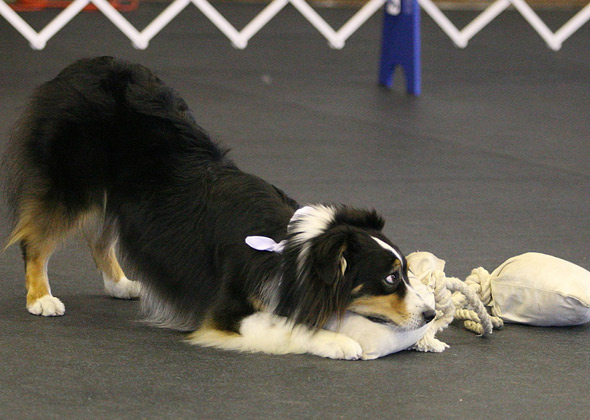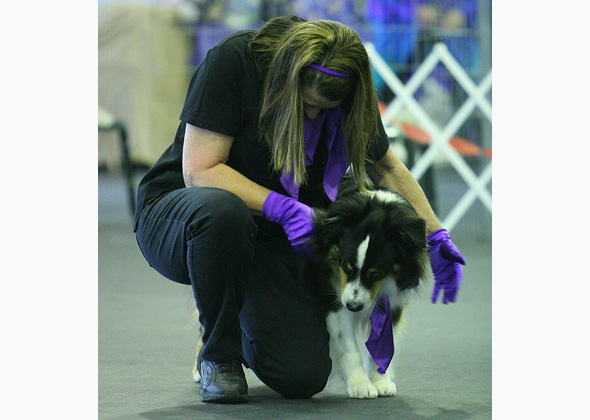Dancing With the Dog Stars — Trophy-Worthy Fancy Canine Footwork
by Arden Moore
Published on March 27, 2012
.jpg)
It's not bad for a team with three left feet.
Pouliot and Listo, an Australian Shepherd, rank among the best dance duos in a canine sport that requires pups to perform left side heels, hind leg raises, weaves, spins and other maneuvers choreographed to music. (Watch the partners perform a tribute to classic television shows by clicking here.)
As millions tune in to watch this season’s celebrities compete on ABC’s Dancing with the Stars, there are thousands of dogs of all shapes, sizes and ages also wowing crowds all over North America in a variety of dance competitions, including canine freestyle, heelwork to music and paws 2 dance.
For insight into the sport's growing popularity, Vetstreet chatted with Pouliot, along with two other legends of the doggy dance circuit.
The Wonderful World of Canine Dance Competitions
“When you compete in agility, obedience or rally trials, everyone has to do the same thing, but not in freestyle,” says Pouliot, who was voted 2011 Trainer of the Year by the World Canine Freestyle Organization. “You and your dog get the opportunity to really touch the hearts of people and make them laugh, cry and feel something. It is wonderful.”
“This sport has brought great joy to my life,” declares Patie Ventre, founder of the World Canine Freestyle Organization. “I’ve had the opportunity to travel all over the world with my dogs. This is a team sport that welcomes people and dogs of all ages and abilities.”
Carolyn Scott agrees. For more than 12 years, she and Rookie, her late Golden Retriever, astounded crowds with their playful but choreographed dance numbers. In fact, their routine to the hit song from Grease, “You’re the One That I Want” has received nearly 7 million views on YouTube.
“I had polio as a child and never imagined that one day I would dance, let alone with a dog,” says Scott, founder of the Musical Dog Sport Association. “Rookie and I traveled all over the United States and Canada, as well as Japan, Australia, Norway and more. Rookie has passed away, but there are still dance moves, known as the Rookie Rear Back and the Rookie Moon Walk, being performed today.”
Turn Your Dog Into a Dancer
Our experts offer these tips for getting your pup out onto the dance floor:
Master the basics first. Enroll your dog in an obedience class that incorporates positive reinforcement techniques.
Incorporate clicker training. Some of the most successful dancing dogs learn specific moves that are marked by the sound of the clicker during training sessions.
Play it safe. Don’t start your puppy at too young an age, and don’t risk injuries by asking him to balance on his hind legs for longer than a few seconds.
Make it fun. Not all dogs are born dancers. Don’t force your pet to dance, and never become impatient during training sessions.
Be flexible. Some dogs, like Rookie, love to improvise during competition, so it takes a savvy dance partner to adapt when a canine makes an unexpected move. Scoring is based on the interaction of the team, as well as the ability to incorporate various moves.
Shine the spotlight on your partner. Don’t let your outfit, props or dance moves distract from your dog’s performance. You won’t score points with the judges.
Don't worry about age. In recent years, dog dance groups have added divisions with names like Sassy Seniors, which welcome gray-muzzled dogs and people in their golden years.
Parting advice: “Do your own thing,” says Ventre. “You and your dog will make a unique team. Test out different music to see what makes your dog’s tail go up. Dogs have a definite affinity to certain music. And, most of all, have fun communicating and socializing with your dog. Dancing is one of the most wonderful ways to bond.”














